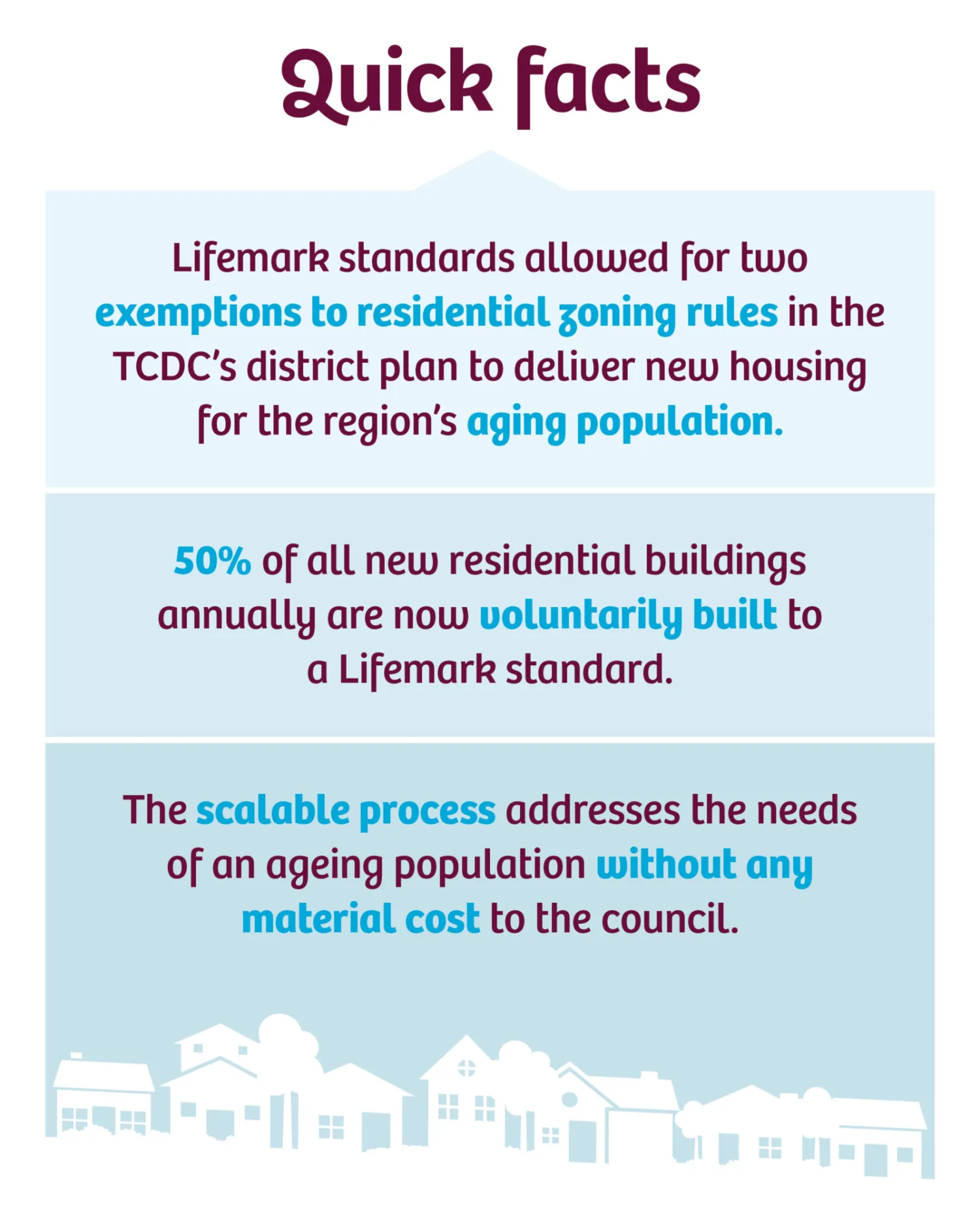Case Study: Housing Incentives that Work
Case Study: Housing Incentives that Work

Background
The Thames Coromandel District Council (TCDC) reviewed their district plan as part of their long-term planning process and decided to address the strategic housing issues emerging as a result of their aging population.
Their housing stock consists of low-rise detached dwellings and semi-detached dwellings on individual titles. There was a mix of private, rental and holiday accommodation and the TCDC wanted the development of new accommodation to meet the needs of the widest possible range of people, particularly older people.
Analysis showed that the number of people in their region aged 65 years and older was 21.2%, compared with 12.3% for the total New Zealand population, and this was projected to increase significantly in the next 30 years. An ageing population has wide-ranging implications when you consider that 50% of those aged over 65 years have a mobility impairment, and unless something changes, their community is not equipped to house and support them.
Actions
The TCDC made changes to its residential zone, within the proposed district plan. This was notified and became operational on 1 July 2016. The plan stated:
“A house or minor unit that is certified by Lifemark or a similar organisation to be functional for both elderly and disabled residents will achieve objectives and policies for the residential area in the plan, including Objective 1: Various forms of residential density and different dwelling types (to) provide all sectors of the community with dwelling choices and high levels of amenity”.
The Lifemark standards allowed for the two exemptions to rules in the residential zone of the proposed district plan:
- An increase in the maximum site coverage from 35% to 40% without resource consent.
- A minor unit to have a maximum gross floor coverage of 60m2, rather than 50m2, without requiring a resource consent.

Challenges
- Gathering internal support for this new initiative.
- Introducing a new external process to the building consent process.
- Communicating these changes to designers, developers and homeowners.
- Resistance from stakeholders to change.
Results
- Around 50% of all new residential buildings annually are now built to a Lifemark standard (Universal Design).
- Lifemark 4 Star is the most common level of performance (although Lifemark 3 Star is the minimum requirement).
- Support from stakeholders and positive feedback from designers, developers and homeowners.
- New dwellings are built to address the needs of an ageing population without any material cost to the council.
ROI
- Low cost/high impact option for the council.
- Minor financial cost to introduce (leaflets/information).
- Half of all new houses are voluntarily built to Universal Design standards.
- Scalable process that can continue to be applied long term.
(ROI = social value per person * people meaningfully affected / Total cost to deliver)


